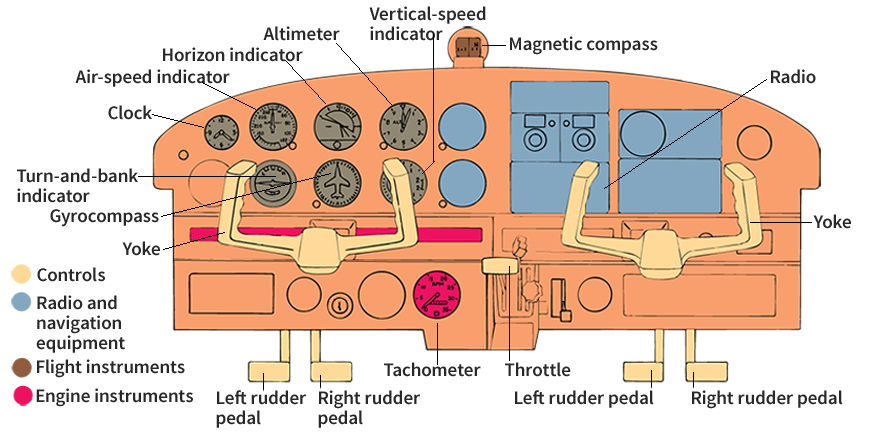Tachometer, << tuh KAHM uh tuhr, >> is a device that measures how fast an object spins. The spinning object may be an engine shaft, an automobile wheel, or a computer disk. Tachometers typically measure the speed of rotation by counting the number of complete turns the object makes in one minute, called revolutions per minute or rpm.

A simple kind of tachometer employs a device called a sensor attached to the spinning object. This type of tachometer counts one revolution each time the sensor spins one complete turn. A computer records the number of turns over a certain period. To calculate the speed in rpm, the computer divides the number of turns by the number of minutes that have passed. Some tachometers use many sensors placed around the spinning object to record rotation speed more precisely.
Many tachometers use magnets to measure the speed of rotation. A magnet attached to a spinning object produces an electric field, a region around the object in which electric force can be felt. The voltage of the field is proportional to the speed of the spinning object—that is, the faster the object spins, the higher the voltage will be. Such a tachometer measures the voltage of the electric field to determine the rotation speed.
In automobiles and other vehicles, tachometers measure the engine speed to control the flow of fuel to the engine and to signal the transmission to shift gears. In a vehicle with manual transmission, a tachometer gauge helps the driver decide when to shift gears. A compact disc (CD) player or disk drive must spin at precisely the correct speed to read a CD or computer disk. These devices use a tachometer to measure and control the speed of rotation.
See also Engine analyzer ; Log .
